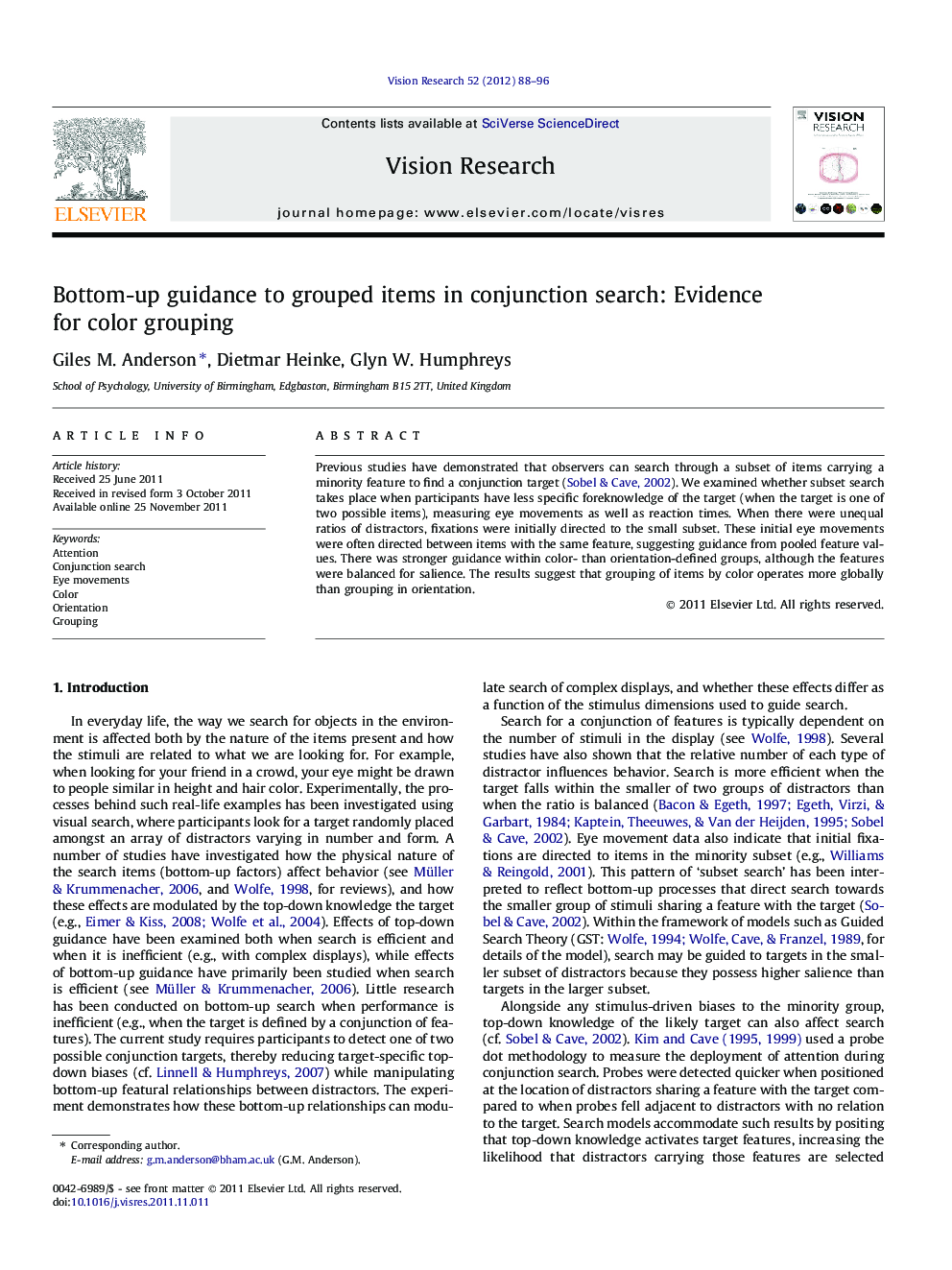| Article ID | Journal | Published Year | Pages | File Type |
|---|---|---|---|---|
| 4034092 | Vision Research | 2012 | 9 Pages |
Previous studies have demonstrated that observers can search through a subset of items carrying a minority feature to find a conjunction target (Sobel & Cave, 2002). We examined whether subset search takes place when participants have less specific foreknowledge of the target (when the target is one of two possible items), measuring eye movements as well as reaction times. When there were unequal ratios of distractors, fixations were initially directed to the small subset. These initial eye movements were often directed between items with the same feature, suggesting guidance from pooled feature values. There was stronger guidance within color- than orientation-defined groups, although the features were balanced for salience. The results suggest that grouping of items by color operates more globally than grouping in orientation.
► Conjunction search facilitated on uneven distractor ratios when one of two targets present. ► Search directed towards minority subsets and then to target. ► Preferentially grouping of items by color, although the features were balanced for salience. ► Eye movements directed between items, specifically at first fixation. ► Items with the same color processed parallel.
